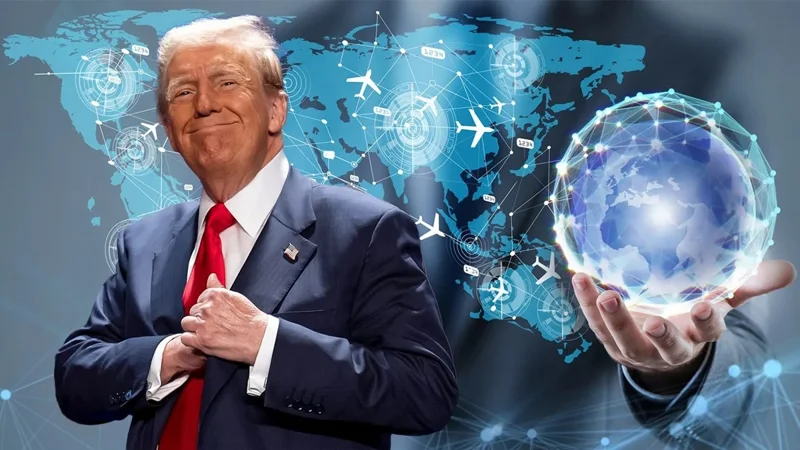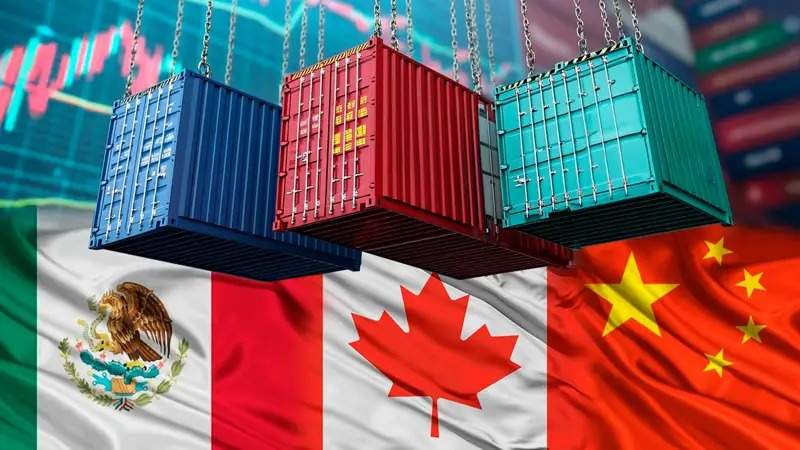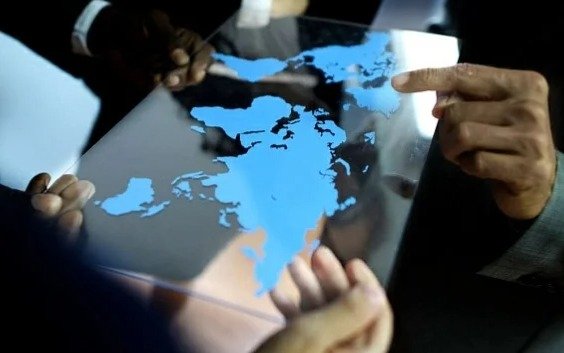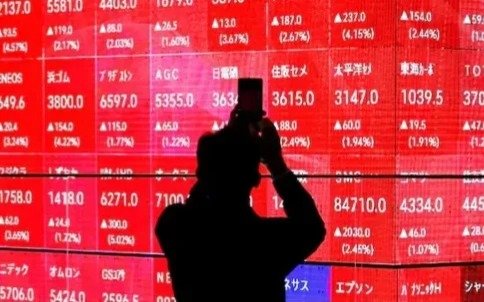What will happen to globalization after Trump’s recent decisions?
U.S. President Donald Trump’s decision to impose large-scale tariffs on imports did not come as a major surprise to the international community. In many ways, it reflects a consistent commitment to his mercantilist approach, which centers on shielding the domestic market from foreign competition through high tariffs and subsidies for domestic producers, writes a Kazinform News Agency correspondent.

Trump’s tactics
Still, few expected that Trump would take a stand against virtually the entire world, with the exception of close neighbors Canada and Mexico, as well as Russia, Belarus, North Korea, and Cuba. With Canada and Mexico, the Trump administration already has a separate story: initially imposing 25% tariffs on them, and then suspending those tariffs temporarily while negotiations take place. As a result, Washington saw no need to include them in the global sanctions list. Moreover, it seems likely that the administration wants to use its brief but intense trade history with Canada and Mexico as a case study or leverage for negotiations with other countries. Trump himself is urging all the countries on his tariff list to come to the negotiating table. This is his strategy: impose tariffs first, and then use them as leverage in negotiations.
There is also another possible explanation — that Trump and his team are well aware of the risks associated with trade wars. The experiences with Canada and Mexico might have demonstrated that tariffs come with real costs. For example, new tariffs on Canadian and Mexican goods increase expenses along the entire supply chain, which today stretches across all three countries with little regard for national borders.

The consequences could be especially painful in industries like manufacturing, particularly automotive. Many components are imported to the U.S. from Mexico and Canada. Furthermore, it turned out that the U.S., for instance, cannot produce aluminum domestically due to the lack of cheap electricity. So, all aluminum comes from Canada. If aluminum becomes more expensive, prices will rise on products like canned beer — a favorite among Trump’s core voter base.
Therefore, Canada and Mexico were temporarily excluded from the general list — their case is being handled separately. Washington is trying to avoid a shockwave if all countries were to respond with retaliatory measures. As for Russia, North Korea, and Cuba — they were left off the list because, according to Washington, these countries are already under sanctions. Still, Russia does export about $3 billion worth of goods to the U.S.
Most likely, Trump and his administration are applying the same logic to Russia as they did with Mexico and Canada. If negotiations with Russia are ongoing, then the U.S. maintains a separate diplomatic track in its relations with Moscow — particularly given that discussions are already underway in Washington about the possibility of imposing new sanctions should Russia refuse to make concessions in talks over the military conflict in Ukraine.
A tax on the world
Against all other countries, the U.S. has effectively launched a full-blown trade assault — a sort of carpet bombing. At the same time, Washington urged other countries not to retaliate, which seems somewhat illogical. Treasury Secretary Scott Bessent called on all governments not to respond in kind, to avoid further escalation.
This statement is quite telling. It shows that the new administration views tariffs almost as a kind of tax on the rest of the world — a way to rectify, in their eyes, an unjust situation. Trump claimed he expects to collect $700 billion, which would help reduce the budget deficit and create conditions for tax cuts. In turn, this is supposed to stimulate economic activity. So, Trump is attempting to tackle two issues at once — the trade deficit and the federal budget deficit. According to Trump’s team, this should eventually lead to the return of manufacturing to U.S. soil.

If we agree that Trump sees the new tariffs as a way to rebalance the system in America’s favor, a clear paradox emerges. His actions are not classic 19th-century mercantilism, nor early 20th-century isolationism. The American president does not intend to abandon the idea of a U.S.-dominated world or to “hide in his own house.” Instead, he wants others to pay what he considers a fairer price for the services the U.S. provides — including access to its market.
Trump-style globalization
In a sense, Trump is still in favor of globalization — but only if it primarily benefits the U.S. This could be described as a new form of imperialism or even colonialism, reminiscent of the 19th century. In some ways, he takes the idea of an America-centric world to the extreme — something the U.S. has often been accused of, especially in the 35 years since the Cold War ended. The thinking seems to be: if the U.S. is the most powerful country and others profit from engaging with it, then the U.S. should stop being modest and demand it’s due.
This is largely why Washington now expects countries like Ukraine to treat past aid as a form of debt. The latest draft of a U.S.-Ukraine resource agreement, according to press leaks, is quite colonial in nature.
It’s worth noting that right after World War II, debates in the U.S. focused on how to assist Europe. Some argued for loans, others said no help should be given. But a powerful faction, led by Secretary of State George Marshall, insisted on providing aid free of charge. That became the basis for the famous Marshall Plan. The logic was that war-torn Europe couldn’t recover on its own — and if it failed, local communists would rise to power, which would be against U.S. interests during the early Cold War.
After World War II, isolationist ideas weren’t popular in the U.S. They’ve resurfaced today under Trump. Mercantilism wasn’t popular either — Americans remembered the Great Depression of the 1930s, which followed President Herbert Hoover’s signing of the Smoot-Hawley Tariff Act. Other countries retaliated, global trade shrank and the world plunged into the Great Depression.

That’s why during the Cold War, the U.S. took a different approach. It supported even defeated nations like Japan and Germany, did not demand reparations — since reparations after WWI had helped fuel the rise of the Nazis. The U.S. also abandoned widely discussed Soviet and French plans to use German labor to rebuild cities. Free trade was seen as a more effective way to build a fairer world.
Within that framework, the U.S. created conditions for Japan and South Korea to rise economically through export-driven models. The U.S. market became their main destination. China followed the same path in the 1980s, and the 1990s marked the beginning of the era of globalization — built on free markets and Western legal and regulatory institutions. These included legal systems that governed trade and supported legal, consulting, and valuation firms.
The U.S. dollar also became the main trade currency and global financial instrument. Globalization expanded the money supply, fueling growth in stock markets, consumer markets, and real estate. Even cryptocurrencies emerged due to globalization, as financial markets sought new tools for investment, speculation, and saving.
For the U.S., this had its downsides. They lost some manufacturing and jobs, which created the “Rust Belt” in states like Ohio — areas that eventually brought Trump to power. The U.S. also developed a chronic trade deficit (except in services). The main issue became the budget deficit, which has ballooned to $36 trillion. This isn’t necessarily a critical problem for the U.S., given the global money supply and the perception of the U.S. as a safe haven for capital. But it’s a highly irritating issue that contributed to Trump’s rise.
In any case, everything depends on the U.S., since it’s the cornerstone of the global economy — despite all the criticisms of its fairness. So when Trump tries to sharply turn the American ship in the turbulent sea of globalization, it affects everyone. Our modern way of life was shaped by globalization. Admittedly, globalization had already reached its growth limits before Trump entered the White House — but now he’s cutting deep into its very core.
Key players reject new rules of the game
The first reactions have already come. China has announced retaliatory tariffs — 34% on $125 billion of U.S. imports. This mainly affects agriculture, meaning farmers in Arizona and Indiana will suffer. But China itself will be affected. For its export-oriented economy, the U.S. market is vital. In 2024, China exported $524 billion worth of goods to the U.S., while importing only $163 billion.
China’s trade surplus with the U.S. accounted for almost 37% of its total surplus in 2024. This trade is not only important in volume but in quality — it’s linked to complex investment chains, logistics, and intellectual property. The 54% cumulative tariffs the U.S. has imposed on Chinese imports are extremely damaging to China’s economy — especially given that many Chinese products have profit margins lower than those tariffs.
China’s reaction shows that major players won’t simply accept the new rules. Retaliatory measures are under discussion in other countries as well — including the EU. So the big question is whether history will repeat itself — will we see a rerun of 1930 and President Hoover’s policies? Should we brace for a new Great Depression?
Stock markets have already responded with falling share prices, and oil prices have dropped too. Market players are looking at the situation through the lens of a possible depression. The first consequence of high import tariffs will be reduced trade, declining business activity, job losses, and shrinking consumer markets.

This will raise questions about the current volume of money supply, which will still seek safe havens — even as it’s excessive for a shrinking global trade volume. This could lead to a temporary rise in the dollar’s value — simply because money will have nowhere else to go. Meanwhile, export-oriented countries will devalue their currencies to maintain competitiveness.
In short, Trump has launched a massive transformation of the global economic system — acting somewhat like Hoover, but in very different conditions. This is a real shock to global trade. And the most important question now is whether anything can be fixed in 4 years — or in 8, if Trump somehow figures out how to run for a third term.
Earlier, it was reported that President Donald Trump declared that foreign trade and economic practices constitute a national emergency. In response, he issued an executive order imposing retaliatory tariffs to protect the U.S. economy and American workers.
